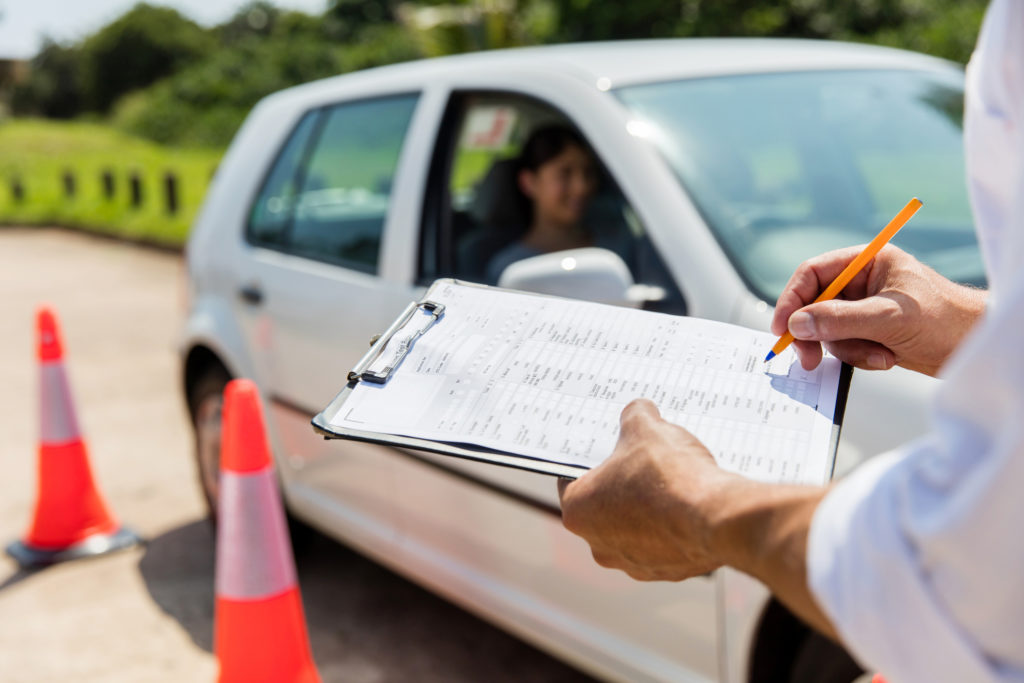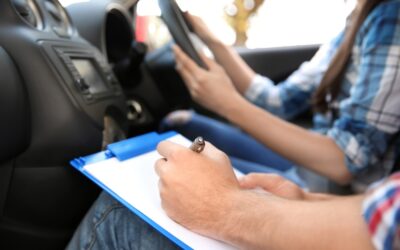Not all cars are quite the same. One car may handle slightly differently from another, and with a multitude of different engine sizes out there, most cars simply feel different to one another. But even with similar-sized cars there’ll be small differences that might make a huge difference to your driving experience – such as where precisely to find that biting point…

So, when you finally sit behind the wheel to take your driving test, if you’re in an unfamiliar car, are you at an immediate disadvantage? Would passing your test be easier if you were able to do it in your own car?
Can You Take Your Driving Test in Your Own Car?
It is possible to take your driving test in your own car, but it’s not a simple case of driving to your test centre and announcing your intentions. There are a few things you’ll have to sort out first.
Taking Your Driving Test in Your Own Car – The Essentials
It is possible to take the driving test in your own car so long as you meet certain rules.
The car you take your test in must:
- Be taxed
- Be insured for a driving test (check your policy wording for more information)
- Be roadworthy with a current MOT (if the car’s more than three years old)
- Have no warning lights showing (such as the airbag warning light)
- Have a legal tread depth on each tyre with no tyre damage
- Be smoke free – no cigarette before the test to calm your nerves!
There are also certain rules about the specific type of car you’re allowed to use, and its capabilities. The car must have an MPH speedometer and it must be capable of reaching at least 62mph. It must have four wheels and a maximum authorised mass (MAM) no higher than 3,500kg. This MAM will be detailed in your car’s handbook.
You can take the test in either a manual, automatic, or semi-automatic car. However, if you take the test in a semi-automatic car, you’ll only be licensed to drive automatic and semi-automatic cars once you’ve passed.
It’s fine to take the test in a car with electronic parking brakes and hill-start assist features.
There are certain makes or models of cars that cannot be used for driving tests. Some of these are prohibited because they don’t give examiners all-round vision. Others are prohibited due to known safety issues. For a full list of all the prohibited makes and models, head here and scroll down.
Things You’ll Need to Take Your Driving Test in Your Own Car
You’ll have to fit a few extra bits to your car before you’re ready to take your test in it:
- An extra interior rear-view mirror (for the examiner)
- L-plates fitted to the front and rear (or D plates in Wales)
- A passenger seatbelt and a proper passenger head restraint
Dashcams are allowed, so long as they point outside the car. You’re not allowed to film the inside of your car during the test. Nor are you allowed to record audio.
So My Car Ticks All the Boxes! Now What?
First, are you absolutely sure your car ticks all the boxes? Because if your car’s found to be unfit for purpose on the day of the test, your test will be cancelled without a refund.
If you want to take the driving test in your own car, all you have to do is let the examiner know when you’re booking your test. On the day of the test you’ll have to sign a form stating that your car insurance is in order. Again, if you don’t sign this form, your test will be cancelled without a refund.
If you are planning on driving yourself to the test centre you will need to have a valid accompanying driver sat next to you.
What happens after you pass your driving test in your new car? Are you allowed to drive yourself home? And what about insurance?
For a complete guide to what happens after you pass your driving test, head here.
Don’t forget that you must tell your car insurer when you pass your test.



